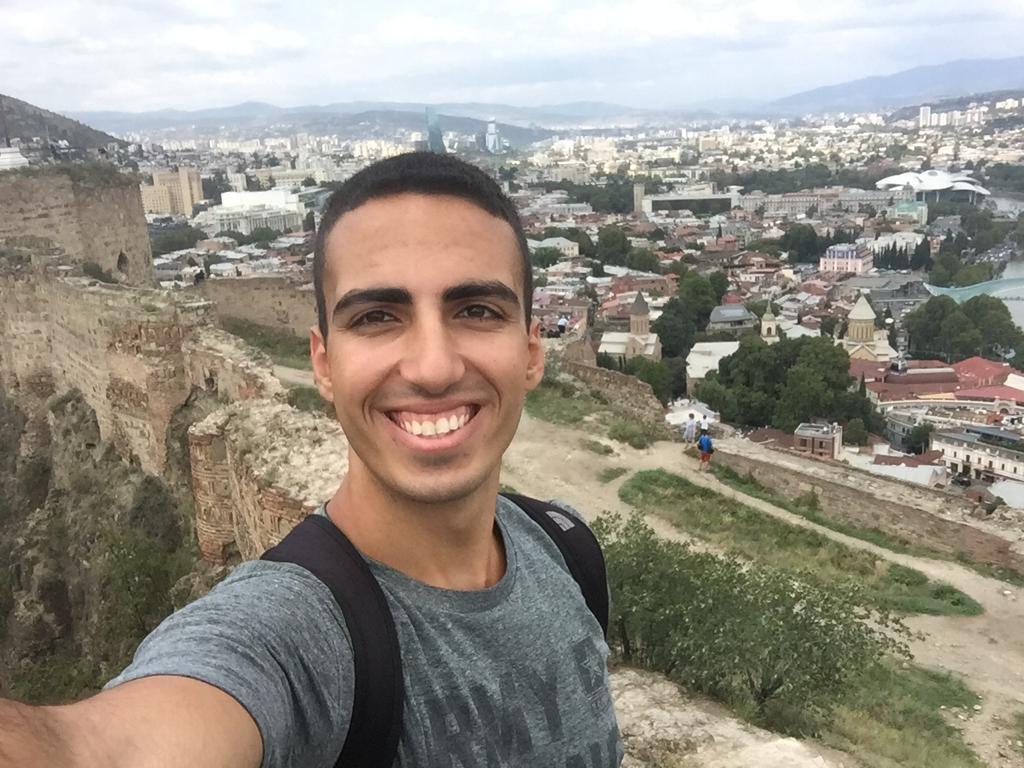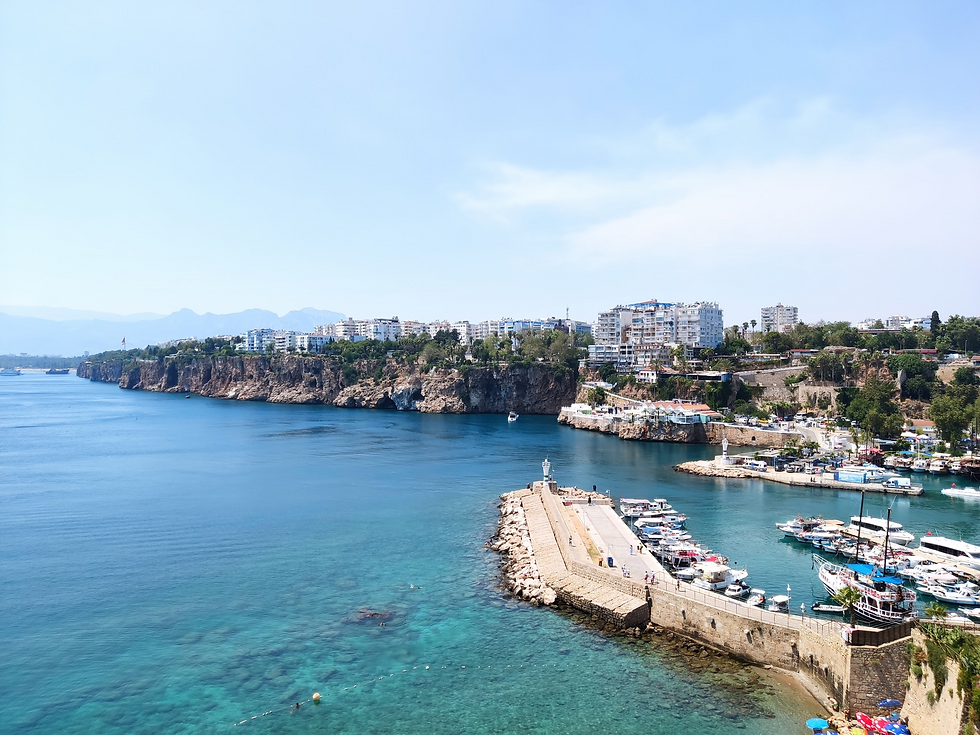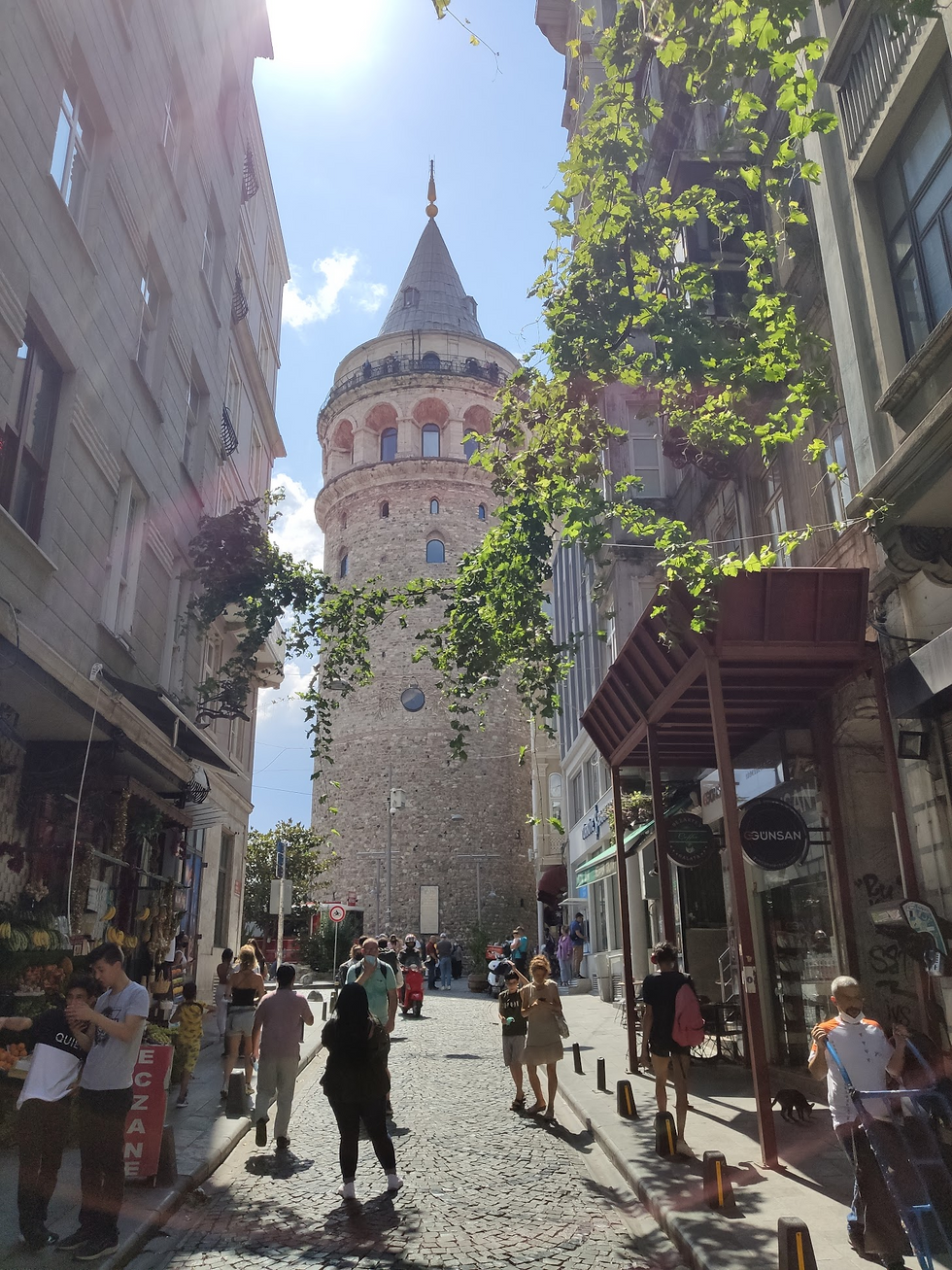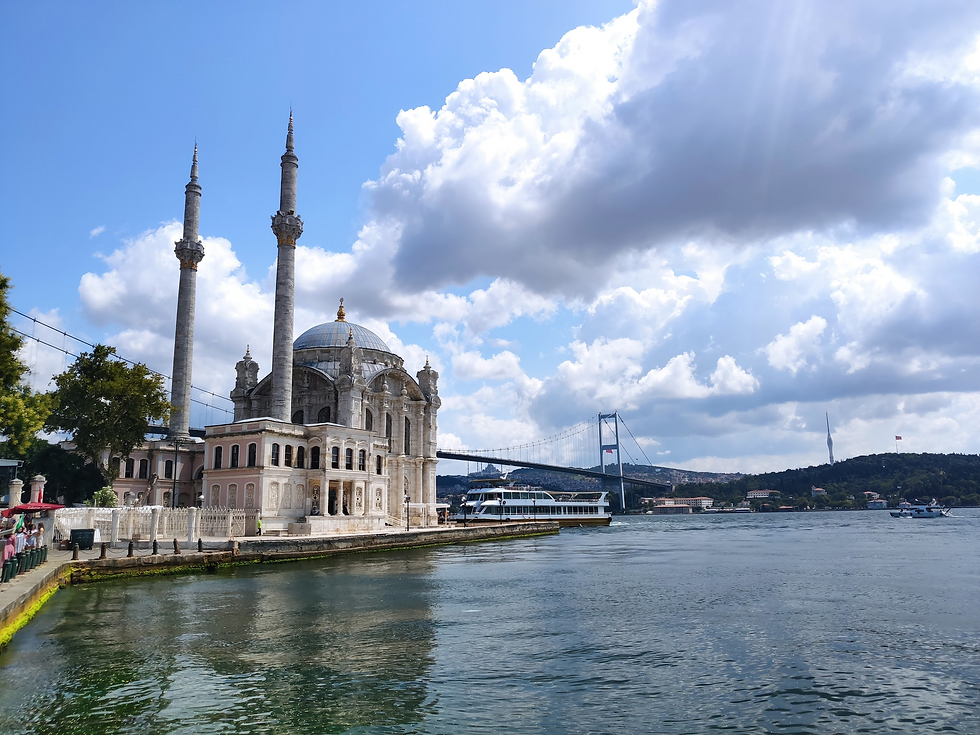Antalya and Istanbul, Revisited
- Aaron Schorr

- Aug 18, 2021
- 14 min read
After bidding good night to Önder, who was inhabiting the first floor of our cabin, we woke up to powerful winds thrashing the wooden structure. We had a full Turkish breakfast and drove up terrible mountain roads until reaching the highway to Antalya. Back in the city where our Turkish trip had started, which was suddenly much bigger than we had remembered it, we had booked a hostel in the old town, only several hundred meters as the crow flies from our first hostel, but seemingly worlds apart. We hadn’t learned our lesson from Istanbul or Izmir, and tried driving right up to the hostel to find parking. Kalieçi - the old town - was a labyrinthine mess of tiny cobblestoned streets, and by the time we had realized the depth of our mistake it was too late: we were trapped. After about 30 minutes stuck behind beer delivery trucks and having to back out of multiple streets to allow other vehicles to pass, we finally managed to park the car a stone’s throw from the hostel. At least I was improving my rusty skills of manual low-speed driving and backing up with no camera.

Perhaps we had become accustomed to it, but the blistering Antalya heat was suddenly not as brutal as we had remembered it. Even so, we sought out a shaded courtyard café serving highly Americanized cold brew and milkshakes. Though Antalya has a long history as a Mediterranean port, its old city mostly isn’t very old, most buildings dating to the 19th century. Some older relics do remain, however, including the Roman-era Hadrian’s Gate with its 3 spectacular arches, and some sections of Roman, Byzantine, Seljuk, and Ottoman walls.

We found a spot with a great view over the city’s harbor, located on a bay with steep cliffs on the opposite side and impressive mountains in the distance. It was a little hazy, but the visibility was better than it had been for the past several days. A man approached us with cries of “shalom!” after we told him we were from Israel, and offered us one of the bagels he was selling. He suggested we visit the free museum next door and head down to the harbor itself. I complimented his English, which was much better than nearly every working-class Turkish person we had met. He thanked me, but said he “needed more” to interact with tourists. “Compared to ten years ago, not many tourists come to Turkey because of politics. We need political change.” The Russian masses along the Mediterranean coast clearly had not gotten the memo, and I told him to make sure he voted in 2023.



We took our new friend up on his suggestion and walked down the hill to the museum. It turned out to be an ethnographic museum, and a strange one at that. Nearly everything on display was from the 20th century, so we were looking at a culture which had perished very recently, wiped out by the forces of modernity and national unity. I say “wiped out,” but besides the very elaborate costumes, much of it looked pretty similar to the rural Turkey we had seen on our trip.
We emerged from the museum to a radically different city from the one we had been in not half an hour earlier. The wind had shifted to carry smoke from the wildfires towards us, painting the sky orange and decreasing visibility almost to nothing. We went back to the same viewpoint, where the opposite side of the bay was barely visible, never mind the mountains in the distance. It was an ugly picture of the apparent new reality of summer travel in the era of rapid climate change.
With the air outside unbreathable, this was the perfect time to get PCR tests to enter our next destination. We drove across town to a clinic with ash falling on us from the sky looking like elegant snowflakes in the burning orange heat. After getting swabbed, we decided to stay indoors no matter what, and looked for an immediate indoor activity nearby. Our solution was rather unconventional - a supermarket. This wasn’t just any supermarket, though, but the top level Migros - one of the largest supermarket chains in the country. It was a strange chain, operating 5 levels of stores that were ubiquitous throughout Turkey - Jet, M, MM, MMM, and the yet-unvisited 5M (it’s unclear what happened to 4M). The Jets and M’s had often been our lifelines for snacks and drinks in small towns, and we were curious what the largest size would look like.
The 5M ended up being a sort of Turkish Target, which was a very strange experience. In our experience, Turkey was very much a country where people did their produce shopping at the market, their medicine shopping at the pharmacy, and their bread shopping at the bakery, so it was an illuminating lesson in economies of scale to see a place that sold everything under one roof. We bummed around the mall for a while until the wind blew the worst of the smoke away from the city and had dinner at a small family restaurant which made great moussaka (which I hope they didn’t think was Turkish).

Freaks of Various Kinds
After dinner, we returned to Kalieçi and walked to a concert venue that had been recommended to us. The place looked like a great time, but the doorman told us it was “couples only” in the classic Turkish obsession over gender ratios. We found a group of 3 women smoking outside and asked them if they would mind us going in with them. Only one spoke any English, but they were fine with the idea. We walked back to the entrance, and the doorman let them in, but he flat-out refused to let us enter. I was reminded why I hate mainstream nightlife with a passion, the only industry where a business can treat you like a contagious leper and get away with it.
After chatting with two guys who were in a similar predicament to ours, we returned to the main drag in the old town and sought out a place to sit. We found a bar that looked good with a table indoors. People started filtering in, and some guys got up on a stage and started tuning their instruments. Suddenly, we realized we had walked into a metal bar and a concert was about to begin. The performance was actually awesome, both because the band played almost only Western songs we knew and because the crowd had so much energy. We were surrounded by half the metal freaks in southern Turkey, but boy, did they like their concerts.

We were awoken the next morning by the sounds of a loud conversation in Russian. Our roommates, a Russian woman with multicolored dreadlocks and a Utah man with tattoos all over his torso who inexplicably spoke Russian, apparently decided that the early morning was a great time to swap thoughts on travel destinations in Turkey. After Utah Man left, Dreadlocks started an even louder conversation on her phone. One of them (or both) had also smoked in the bathroom, so in addition to being hotter than hell, it also smelled like it. It was not a great way to start the day.
We were flying in the afternoon to Istanbul, and we spent our last morning at another waterfall near town. Unlike the first one, however, this one was a green island in the middle of an industrial neighborhood - a very Turkish approach to nature. There were some caves to climb through to get to the waterfall, and we imagined cries of “Hazelnuts!” echoing through them from Cappadocia as we climbed through. The waterfalls had some Turkish macho men taking photos stone-faced, and teenage girls in Harvard t-shirts. I had actually spotted no fewer than 4 Harvard shirts in 24 hours in Antalya, making me conclude that Yale really needed to step up its international soft power projection efforts.

We dropped off our car which had served us so well and got a ride from our old friend Oğuzhan to the terminal, who really doesn’t drive as well as someone who spends all his time complaining about Turkish drivers should. Yotam nearly got taken away by Turkish security for the “knife” (pronounced with a hard k) in his first aid kit, but we were allowed to board our flight to Istanbul, one of a dozen that afternoon.
The plane was boiling, but we only spent about 5 minutes at cruising altitude before coming to land at Istanbul’s Sabiha Gökçen airport. Walking out of the terminal, we almost had to do a double take since for the first time since arriving in Turkey, it wasn’t blazingly hot during the day. We headed to town and checked into the nicest hostel I had seen in years - thank you, Kailash, for the stellar recommendation. It wasn’t all good fortune, though - it literally took longer (1:25 h) to reach the city center from the airport by bus, riding on the same highway we had driven on the previous week, than it did to fly from Antalya to Istanbul (1:10 h), and we had to take a subway on top of that. Instead of the Eurasian Tunnel, though, we crossed over to the European side on the Fatih Sultan Mehmet bridge, which offered pretty views of the Bosphorus.


The hostel receptionist suggested a backpacker pub for dinner, but when we got there it seemed awfully empty, despite the elaborate decor. Trying to order from the guy at a front desk of sorts, we ran into 3 Turkish women in their late 30s who translated for us and invited us to sit with them. They took us upstairs, which was much more lively and decorated with flags, maps, and signs from all over the world, and we discovered that only one of them - Gamze - really spoke English, since she had spent 4 months working at a Dunkin’ Donuts in Annapolis. The other two - Ayça and Berat - occasionally interjected in English, but Gamze did most of the translating for the group. Just as we told them how old we were, prompting them to call us babies, the waitress brought some placemats, which they flipped over to reveal safari-themed coloring pages. Hilarity ensued, and we spent the whole meal coloring as we chatted. Ayça took a particular interest in Yotam, who looked “exotic” by Turkish standards. I asked her if she was single and she started changing colors.

Istanbul Insanity

The next day was another whirlwind of exploring Istanbul. We had breakfast with Valeriya, an ethnic Russian from Estonia who worked as a relationship therapist. Valeriya had similar plans to ours and a list of places to visit, so we decided to join forces. Since we had spent our previous visit to Istanbul primarily in Eminönü - the southernmost European district - we were planning to spend the first half of the day exploring Galata and Dolmabahçe, the two districts to the north before crossing over to the Asian side in the afternoon. We walked through Galata to Karaköy, a leafy district on the Bosphorus with lots of cute-looking cafés and bars, and onwards to the Dolmabahçe Palace. Valeriya was looking absurdly glamorous in a red dress (to take photos for her travel blog, of course), and as we walked, I asked her what it was like to grow up as a Russian in Estonia. She painted a picture of an entirely segregated society, where Estonians and Russians each speak their own language, attend their own school, and socialize within their own circles. At this point, she said, she didn’t have a single ethnically Estonian friend.

A ticket to enter Dolmabahçe palace was 120 TL ($14), or 20 TL ($2.3) for students. I tried showing my Yale ID, but the man at the counter wouldn’t accept anything but a specific international student card, yelled at me when I pointed out the words “university” and “student” on my card, and would only take cash. We turned around and left, but not before getting an eyeful of the gorgeous entry gate to the palace, a marble masterpiece of European design with Arabic lettering at the top dating it to 1748-9.

From Dolmabahçe, we hopped in a cab along the Bosphorus to the Ortaköy Mosque. With the southernmost Bosphorus bridge almost directly overhead and views of a ferry pier, the mosque was a beautiful structure, but we made the mistake of coming at noon on a Friday, when the mosque hosted the most important prayer of the week. Since leaving our hostel, the entire area had been incredibly European, almost a blend of Vienna and Moscow in terms of architecture and infrastructure.

By now, it was about time for lunch, so we hailed a cab to take us to Balat, a hip district sandwiched between Galata and Eminönü. The driver, suddenly looking very distressed, raised the parking brake and hopped out when the car was still in motion. Since he had employed the classic Turkish taxi driver trick of using a seat belt buckle with no belt (to stop the car from beeping without the nuisance of a seat belt), I swear his feet hit the pavement before the taxi even came to a screeching halt. Waving his arms around, he tried hailing another cab to take us to our destination, but for some reason (perhaps because he literally looked insane), nobody agreed to take us. He came back and haltingly explained that his car had a problem and he needed yardım (service), and let us out at a major intersection after trying to explain how to get to Balat, as if that was what we needed. Now short a lunatic driver, we found another cab to take us there in a few minutes driving on an intracity highway.

Balat looked like the touristy part of every city in Southern Europe, with rows of multicolored buildings hosting restaurants lining cobblestoned streets. It did have some character, though, in the form of some interesting street art made of old furniture, and very strangely designed cafés full of old junk. Not in a cool way, though - the place we stopped for some orange juice literally looked like someone’s attic. I was proud of myself, having conducted the entire interaction in Turkish without grasping for words.
Road tripping through Turkey outside Istanbul was as close to total immersion as I could get, and the trip had taught me lots of interesting tidbits about the Turkish language. Previously, I had thought that Turkish was entirely distinct from Indo-European languages, related only to its ethnic relatives in Central Asia and Eastern Europe (Hungary, Estonia, and Finland). I had anticipated some Anglicization and some Arabic influence, but not much more than that. Instead, I discovered that Turkish had a whole host of influences, most notably French, with words like gar (train station), garson (waiter), asansör (elevator), and plaji (beach). There was also plenty of Arabic influence, no doubt a historical product of the Ottoman Empire, with some words that even carried over to Hebrew like hardal (mustard), mangal (barbecue), and even ve (and). My personal favorites were the food items that I recognized from my maternal family's Syrian cuisine, like çorba (soup), köfte (meatballs), and lahmacun (flatbread topped with meat). Most surprisingly, some of the Gregorian months in Turkish shared names with Hebrew months (which themselves are Babylonian in origin, as I recall): Şubat (February), Nisan (April), Temmuz (July), and Eylül (September), while others - Mart, Mayıs, and Ağustos - were clearly Latin in origin.
A Last Hurrah feat. More Yalies
Back in Balat, I had my last Turkish kebab for lunch and we left Valeriya to continue her photographic adventures. We took a crowded bus to the ferry terminal in Karaköy on the northern bank of the Golden Horn and boarded a ferry to Kadıköy on the opposite side of the Bosphorus (the names were confusing me as well). The ship looked like something that might have crossed the Black Sea in the 1930s and was appropriately sluggish, but we eventually made it to the Asian side. We were meeting Selin, a Turkish friend of mine from Yale who was a prominent eco-activist and an absolute firecracker. So prominent, in fact, that when we walked past a group of Greenpeace activists she had to hide her plastic water bottle from their sight. She looked like even more of a tourist than I did, and made the fitting suggestion to embark on a Bosphorus cruise. We had some time to kill before the cruise departed, and we spent it looking for rolled lokum (Turkish delight) for Yotam to bring back to Israel in the shops of Kadıköy. Having a local made it easier, but we still couldn’t find anything appropriate, and I wished we had time to visit Uncle Rocky’s shop in Sultanahmet.
During our unsuccessful search, we spoke about Turkish food, and both Yotam and I said that we didn’t think Turkish tea was very good. Tea drinking is a nearly religious practice in Turkey - you could probably measure unemployment in the country by counting the number of young men drinking it out of little carafes on street corners - and Selin was not pleased. She took us to a café by the waterfront where we gave it another shot, but I still wasn’t converted by the bitter and unsophisticated flavor.

We boarded our tour boat and started sailing up the European bank of the Bosphorus, past all the landmarks of our three days spent in Istanbul: Hagia Sophia, Topkapı, Karaköy, Dolmabahçe, and Ortaköy. Selin and I started chatting about Turkish nationalism, and I wondered what her opinion on Ataturk as a very liberal and Westernized Turkish woman was. “Ataturk was so welcoming to everyone,” she said, “you could just be what you wanted to be”. I was skeptical: “Except Armenian. And Greek. And Kurdish.” She laughed and conceded that he was better than Erdogan.
There was a man on the boat who came by every few minutes selling a different product - tea, juice, cookies, and other desserts. The boat reached the northern bridge and turned around to head back along the Asian bank, giving us great views with the sun at our backs. Selin introduced us to kağıt helva (literally “halva paper”), thin wafers stuck with nougat and unfortunately devoid of halva. I told her it was pretty good, but it really needed some tea to go with it, and she nearly exploded.
We docked in Kadıköy, and Selin told us she would give us the ultimate Turkish experience for dinner by taking us to a meyhane. These are the Turkish equivalents of Greek tavernas, all about seafood, anise spirits, and live music, and we had seen them in several cities. We sat down in a beautiful restaurant on one of Kadıköy’s main pedestrian streets, and Selin ordered plates of mezze, the Turkish version of tapas. Since I don’t really eat seafood, these were primarily vegetable- and yogurt-based, and incredibly delicious. These are consumed with rakı, Turkey’s version of arak, ouzo, or sambuca, generally ordered by the bottle. Strangely, Turks drink rakı by pouring a shot into a larger glass and then topping it with water, turning the clear liquid milky white in the process. As we started eating, two singers got up and gave a fantastic performance Turkish classics, making the evening perfect. One of my favorite aspects of Turkey’s social culture was how prevalent and good live music in bars and restaurants was.
Midway through the meal, we were joined by Bilal, another Yale friend from India. He apologized for being late and said it was because he had been held up at Turkish customs, stuck with a bag he couldn’t unlock “full of Romanian Communist propaganda.” Bilal was joining us for some of the later legs of the trip, and I could tell he was going to be a great addition.

We visited a local confectionary for some late-night baklava and tea, which finally combined to be delicious, and said goodbye to Selin at a nearby taxi stand. Istanbul has nearly no public transport after midnight, which is inexcusable for a city of 16 million. We got to the front of the line and got in a cab, only for the driver to try and explain to us in rapid-fire Turkish why he couldn’t take us. Nobody around spoke any English, so we got Selin on the phone to act as our simultaneous translator. She explained that only a “European” taxi could cross over to the European side, and another car would be coming to take us there (we later learned that only certain taxis are allowed to cross the bridges to reduce traffic on them). Several minutes later, our new driver materialized and engaged in some very shady-looking monetary exchanges with the taxi stand manager. He was the first driver to actually use a navigation system, but my hopes for a smooth ride were dashed when he started texting on the highway, using his left hand to shift gears with his chair all the way back and his shoulders leaned over the wheel in a strange synchronized dance as I scanned the traffic ahead. Even past midnight with no traffic, the ride was over 40 minutes long, and we were only going from one central district to another.



























Comments